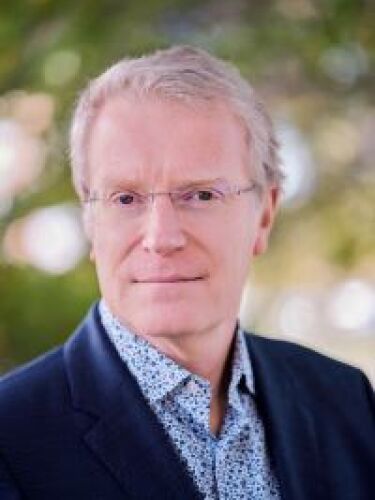Orna announced first-ever data from its lead isCAR program that validates both the technology and its LNP delivery platform. BioSpace spoke with ORNA CEO Tom Barnes.
Photo: Illustration of Orna’s engineered circular RNA (oRNA) inside a lipid nanoparticle/Courtesy Orna Therapeutics
Orna Therapeutics stormed out of the gate in February 2021 with $100 million in financing. Since then, the Cambridge, MA-based company has done anything but spin in circles. Orna made its way onto BioSpace’s list of Top Life Sciences Startups to Watch in 2022 list and on Monday, it gave investors something new: validation.
Orna, which is pioneering a new class of fully engineered circular RNA (oRNA) therapies, announced first-ever data from its lead isCAR program that validates both the technology and its LNP delivery platform. Orna will be presenting this data and more at the American Society of Gene & Cell Therapy (ASGCT) conference this week.
Like its name suggests, Orna is creating O-shaped RNA therapies for the treatment of cancer, autoimmune and genetic disorders. As circular RNA is more stable than linear, it could prove quite effective in cells, especially with the simpler LNP (non-viral) delivery vehicle which would allow better-tolerated CAR-T therapies.
In the first presentation, presented Monday, Orna described how its lead isCAR program demonstrated not only tumor suppression but eradication in a NALM6 (leukemia) mouse model.
“We were hoping for a blip, like if we hammered this, maybe that would give us something to work with. It would be like getting on base,” Orna CEO Tom Barnes, Ph.D. told BioSpace. “But in our very first experiment, we eradicated the tumor.”
Barnes shared that with one circular construct, the company witnessed a reappearance of the tumor following washout, but with the other, the tumor remained undetectable. One might think this would be a shoo-in for a Phase I candidate, but Orna believes it can improve upon this.
Barnes relayed a joke made by Orna CSO Robert Mabry: “Eradication. Well, it only gets better from here.”
This means that “what we now want to do is get the same result but by improving things, [with] fewer doses and lower doses. There’s still plenty for us to optimize, but we’ve already shown that eradication is within the scope of what we can achieve,” Barnes said.
He shared that Orna anticipates being in the clinic with the oncology program in early 2024.
Orna will follow this up on Tuesday with a poster on its preclinical work in Duchenne Muscular Dystrophy (DMD). Barnes explained that the usual approach to treating DMD is the attempt to convert it into the less-lethal Becker’s muscular dystrophy variant by introducing microdystrophin. Using Antisense oligonucleotides (ASOs), researchers attempt to skip over the splicing of bad exons, while another approach uses gene editing to force this “skip-over”.
Orna’s approach leverages what it calls mini-dystrophin as well as full-length dystrophin. “Because we can work with circles, we can contemplate either even larger, truncated versions – so they have more function and they’re still smaller – but we can even think about full-length,” Barnes said. “We’ve shown that we can translate that in vitro. In other words, that RNA is functional and it’s capable of making full-length protein.”
In a first, the preclinical data demonstrate the non-viral delivery of a large, full-length, dystrophin-encoding RNA in human cells, in addition to the in vivo delivery of smaller length versions in the mdx mouse model of DMD.
“We’ve been seeing really amazing expression and localization of the of the microdystrophin right where you want it around the edge of the muscle fibers,” Barnes said.
Orna’s therapy is also redosable, which could lead to the elusive but necessary balance between dose level and potency.
“Nonviral, full-length dystrophin was described to us by a muscle KOL as the holy grail of DMD therapy,” Barnes said. “Ours is redosable; the lipid is clinically validated, so we know the lipid is safe; we know we’re working with the full-length. We haven’t quite put it all together, but we’re only a few short steps away from potentially spectacular success.”






